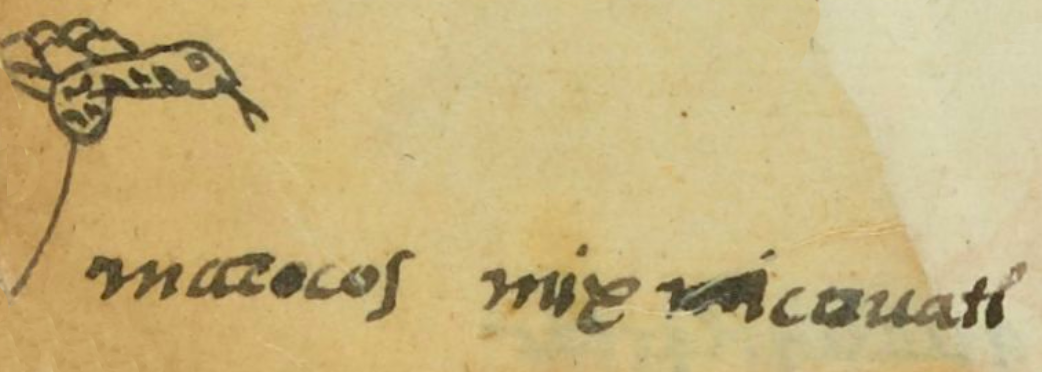coatl (MH483v)
This element for snake or serpent (coatl) has been carved from the compound sign for the personal name, Mixcoatl. In this black line drawing, the snake is shown in profile, facing toward the viewer's right, with its forked tongue protruding.. It is largely horizontal, but the back part of its body is apparently curled, and the tail is not visible. The body has black spots.
Stephanie Wood
Coatl is the name of the first day of a thirteen-day calendrical cycle, and therefore a common personal name for those possibly born on that day. Men, especially, seem to have carried this name. A wooden, turquoise-mosaic pectoral in the shape of a snake is held in the British Museum, whose curators have written: "The Mexica considered serpents to be powerful, multifaceted creatures that could bridge the spheres (the underworld, water and sky) owing to their physical and mythical characteristics."
Stephanie Wood
mixcouatl
Mixcoatl
Stephanie Wood
1560
Xitlali Torres and Stephanie Wood
snakes, serpents, víboras, serpientes, cohuatl

coatl, snake, https://nahuatl.wired-humanities.org/content/coatl.
el serpiente
Stephanie Wood
Matrícula de Huexotzinco, folio 483v, World Digital Library, https://www.loc.gov/resource/gdcwdl.wdl_15282/?sp=46&st=image.
This manuscript is hosted by the Library of Congress and the World Digital Library; used here with the Creative Commons, “Attribution-NonCommercial-ShareAlike 3.0 License” (CC-BY-NC-SAq 3.0).


